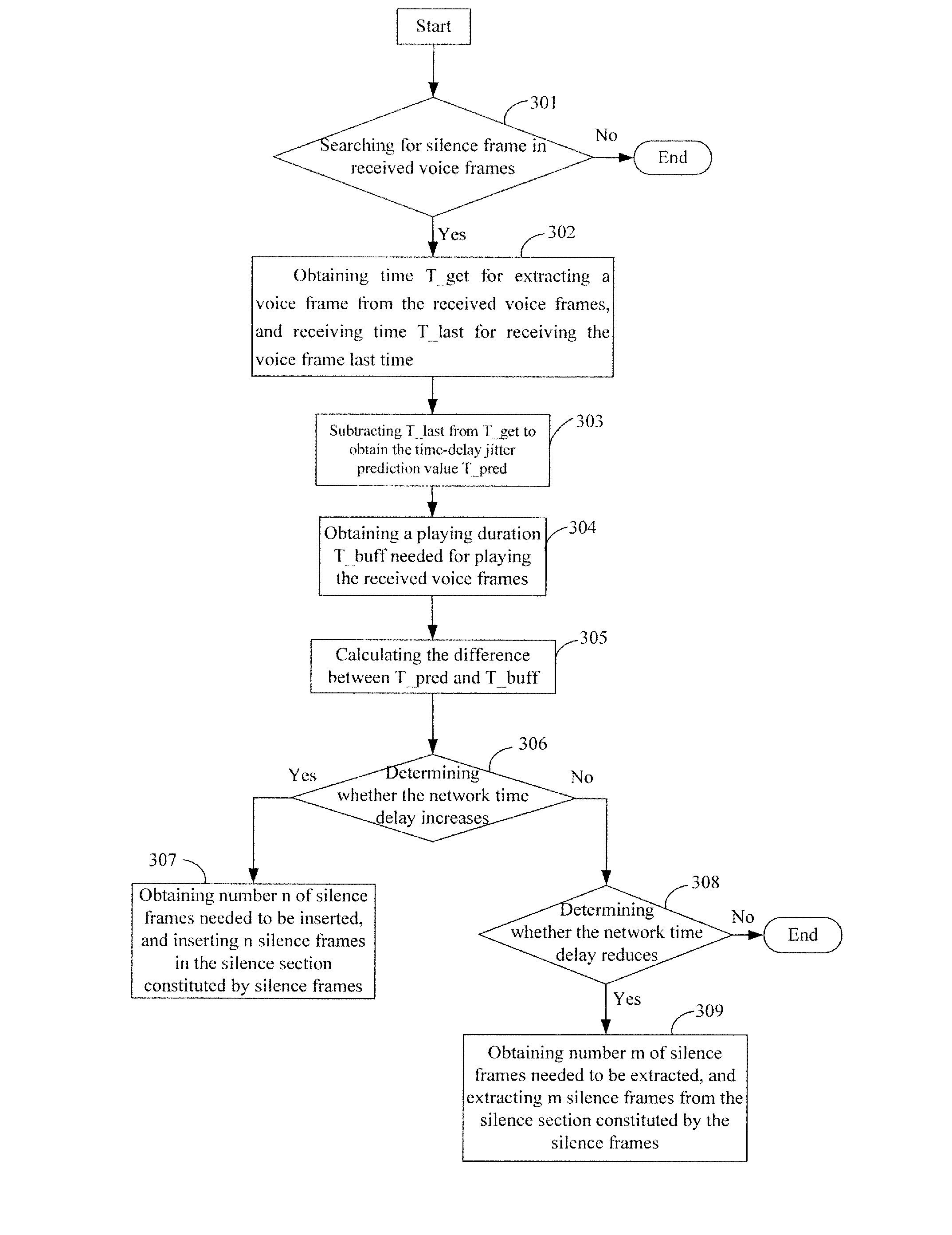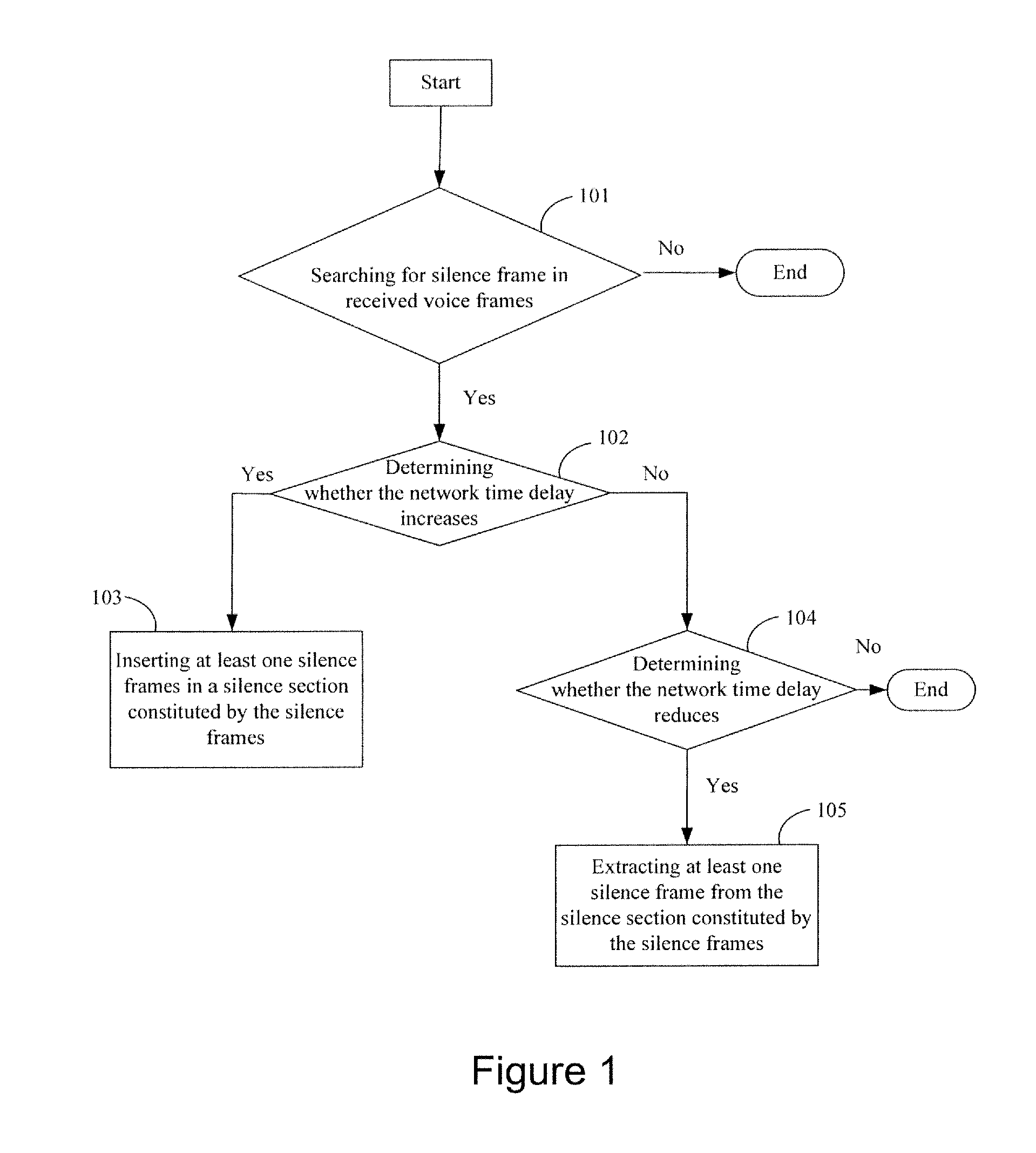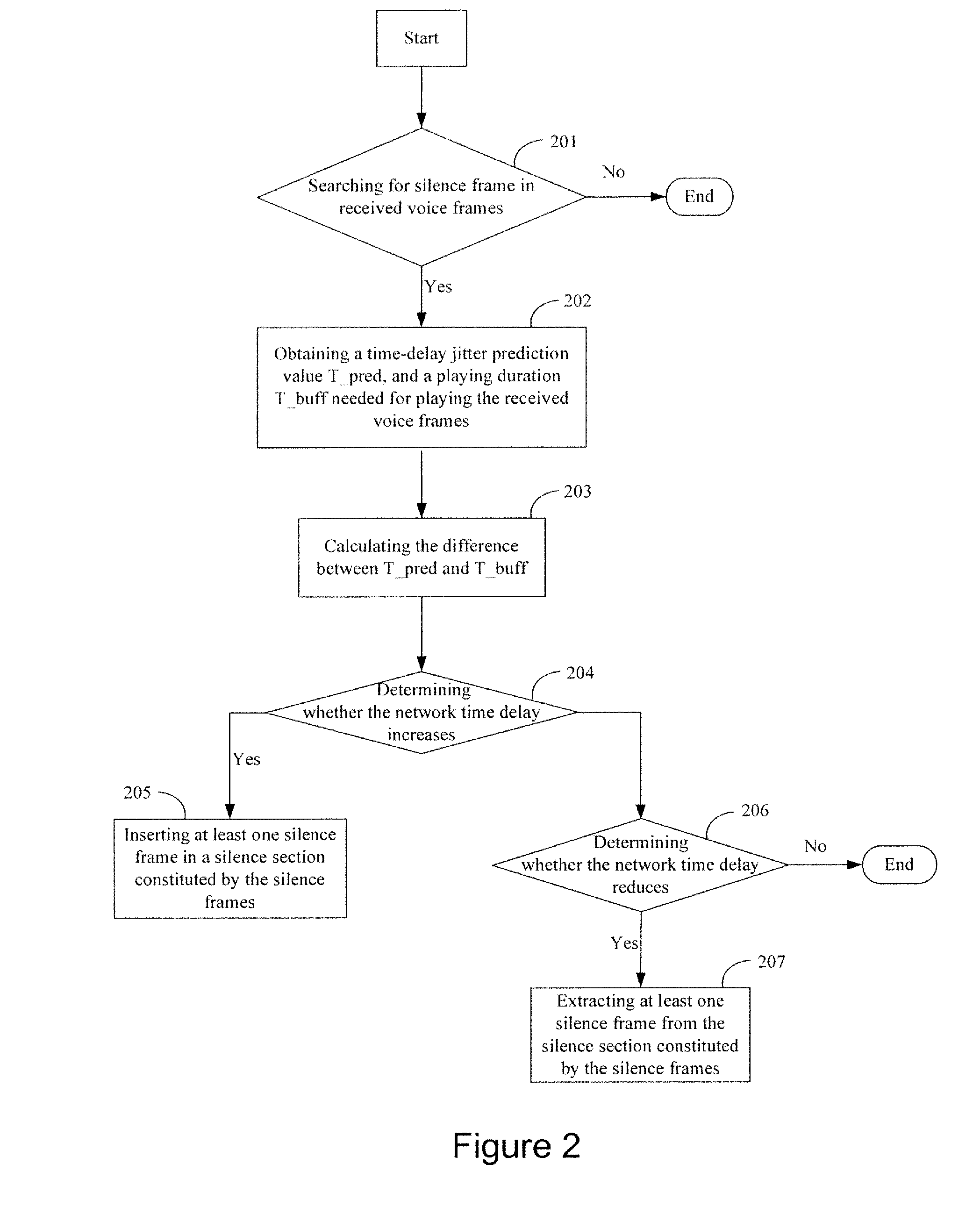Method and device for processing network time delay characteristics
- Summary
- Abstract
- Description
- Claims
- Application Information
AI Technical Summary
Benefits of technology
Problems solved by technology
Method used
Image
Examples
first embodiment
The First Embodiment
[0060]Voice communication service is taken as an example in the embodiment, received voice frames are stored in a buffer, in which the buffer is a section of fixed-size storage area. However, the scheme of the embodiment is applicable to all real-time audio services.
[0061]The method for processing the network time delay characteristics provided by this embodiment of the present invention includes: determining whether there is a silence frame in received voice frames, if there is a silence frame in the received voice frames and determining the network time delay increases, inserting silence frames in a silence section constituted by silence frames, if determining the network time delay reduces, extracting the silence frames from the silence section constituted by silence frames. Since the voice frame includes silence frame and non-silence frame, playing distortion of the non-silence frames will not be generated by increasing or reducing the silence frames. No more...
second embodiment
The Second Embodiment
[0070]In the embodiment of the present invention, voice communication service is taken as an example, received voice frames are stored in a buffer, in which the buffer is a section of fixed-size storage area.
[0071]FIG. 2 is a flow chart illustrating a method for processing network time delay characteristic provided by a second embodiment of the present invention. The method includes the following.
[0072]Block 201: searching for silence frame in received voice frames. If there is at least one silence frame in the received voice frames, proceeding to block 202; otherwise, terminating the flow.
[0073]Block 202: obtaining a time-delay jitter prediction value T_pred, and a playing duration T_buff needed for playing the received voice frames.
[0074]The means for obtaining the time-delay jitter prediction value T_pred may be as follows. Subtracting receiving time T_last for receiving the voice frames last time, from the time T_get (that is, the time for getting voice fram...
third embodiment
The Third Embodiment
[0087]In this embodiment of the present invention, voice communication service is taken as an example, received voice frames are stored in a buffer, in which the buffer is a section of fixed-size storage area.
[0088]FIG. 3 is a flow chart illustrating a method for processing network time delay characteristics provided by a third embodiment of the present invention. The method includes the following.
[0089]Block 301: searching for silence frame in received voice frames. If there is at least one silence frame, proceeding to block 302; otherwise, terminating the flow.
[0090]Block 302: obtaining time T_get for extracting a voice frame from the received voice frames last time, and receiving time T_last for receiving the voice frame last time.
[0091]The buffer is a fixed-size storage area. The voice frame which is first inserted into the buffer is extracted first. Thus, it may be considered that a voice frame which can be extracted ranks first in the buffer. While compared...
PUM
 Login to View More
Login to View More Abstract
Description
Claims
Application Information
 Login to View More
Login to View More - R&D
- Intellectual Property
- Life Sciences
- Materials
- Tech Scout
- Unparalleled Data Quality
- Higher Quality Content
- 60% Fewer Hallucinations
Browse by: Latest US Patents, China's latest patents, Technical Efficacy Thesaurus, Application Domain, Technology Topic, Popular Technical Reports.
© 2025 PatSnap. All rights reserved.Legal|Privacy policy|Modern Slavery Act Transparency Statement|Sitemap|About US| Contact US: help@patsnap.com



